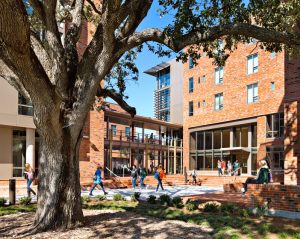As part of the work in our strategic plan, AIA Virginia will be including interesting and relevant articles written by our members and guest authors. We would like to thank Rob Reis, AIA, from Hanbury for submitting this article. If you would like to submit an article for the member newsletter, contact Cathy Guske at cguske@aiava.org
What Did the Trees Do Wrong?
submitted by Robert V. Reis, AIA
“What did the trees do wrong that they all had to be cut down?” asked a nine-year-old, Imogene of Denver, when a grove of old-growth trees were removed near her home. As professionals responsible for shaping the built environment, why are we so seemingly willing to eradicate nature and re-shape the environment? The question, unfortunately, is neither isolated nor simple to answer.
Conventional development patterns (and balance sheets) frequently call for clear-cutting trees and otherwise mostly “scraping clean” the landscape. This practice has resulted in millions of acres of forested acreage being lost to development. (John Talberth of the World Resources Institute, for example, has estimated that between 1992 and about 2020, some 12 million acres of southern U.S. forests were lost to development and that another 20 million could be lost by 2040.) However, there are different patterns afoot as well, and their benefits are becoming clearer in many settings.
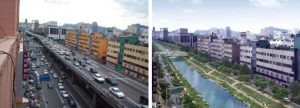
The Cheonggyecheon Stream in Seoul, Korea, is a unique restoration effort that reveals a new-found respect for nature The Seoul Metropolitan Facilities Management Corporation has unearthed a long-buried, long-forgotten stream bed, not only suffocated below a major urban artery, but one with an unsightly and divisive elevated roadway above to boot. The new stream-park reconnects residents with their rich past, captures and filtrates storm water, reduces airborne carbon, and oxygenates the air while raising property values and spawning vital new development that celebrates the density so necessary in a city of more than 25 million people. The positive impact of working with rather than against nature can be profound—impacting financials, health, and quality of life.
University campuses are places where landscape—and trees in particular—play an important aesthetic role but also in establishing a sense of permanence and connection to the past. On recent projects at Rice University and Baylor University, mature live oak trees were relocated, preserving campus treasures and maintaining the spirit of place defined by these majestic trees. Providing shade and defining exterior spaces, these iconic trees also mark pathways, important connections, and destinations.
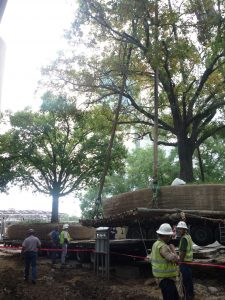
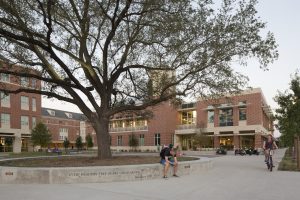
At Tulane University Weatherhead Hall was planned around the heritage trees – working with the architecture to define space and a signature identity.
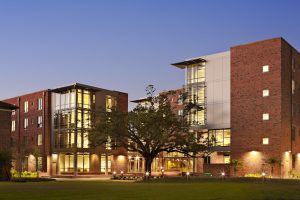
There are so many reasons to consider not only keeping the trees but also to just embrace the site ecology more broadly, whether this means reestablishing previous conditions or just intervening more gently on existing vegetation. When the children, like Imogene, ask, the planners and designers ought to have a better response than “they were, inconveniently, in the way.” Imogene knew that the site ecology—the trees, in her case—had value. It’s time that the owners, developers, and designers understand that value, too.

